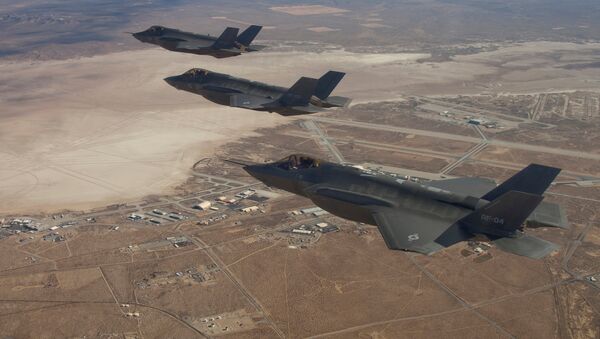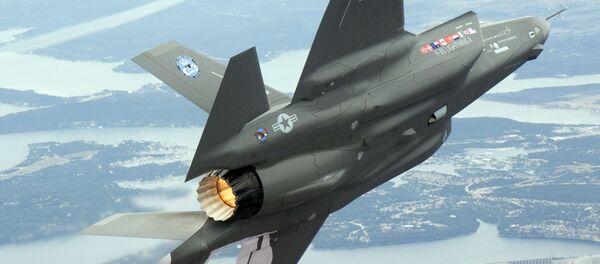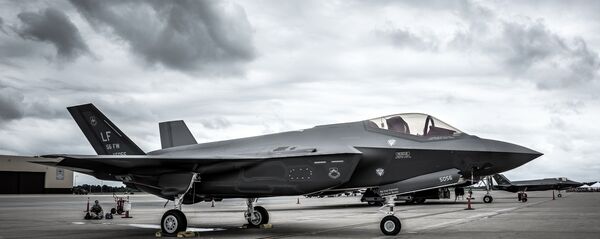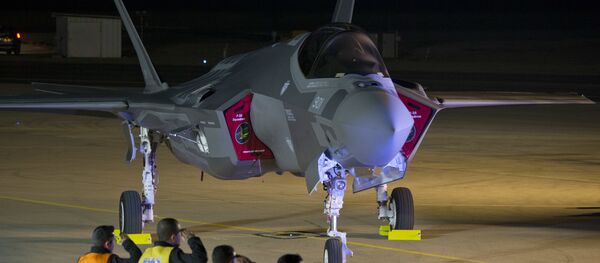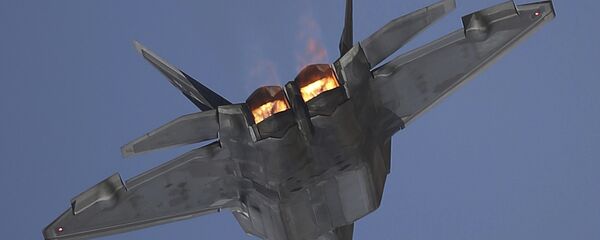US Air Force Chief of Staff General David Goldfein elaborated on the new "concept of operations" during a Tuesday event at the Brookings Institution, a Washington, DC, policy think tank. Noting it would require a $135 billion budget from Congress, he said the war plan was designed to "attack an enemy's weaknesses as opposed to attacking their strengths" in a future conflict with Russia or China.
The Pentagon singled out those two nations as "revisionist powers" in its 2018 National Security Strategy, noting that it believes that "inter-state strategic competition, not terrorism, is now the primary concern in US national security."
"The central challenge to US prosperity and security is the reemergence of long-term, strategic competition by what the National Security Strategy classifies as revisionist powers. It is increasingly clear that China and Russia want to shape a world consistent with their authoritarian model — gaining veto authority over other nations' economic, diplomatic and security decisions," the document states.
Naturally, it's against Russia and China that Goldfein said this new strategy is directed, since they form what the NSS calls a "peer threat," but it can also be used in deterring a "rogue nation" such as the Democratic People's Republic of Korea.
Goldfein told the policy think tank that the purpose of the strategy was to carry out "stealth and joint penetration," causing chaos against which an enemy would have to make hard and confusing choices about which offensives it should respond to. At the center of it all is the Lockheed Martin F-35 Lightning II, the stealthy fighter-bomber the Pentagon has sunk over a trillion dollars into.
"If a China or a Russia or another adversary on the globe ever were to see an F-35 inside their airspace," Goldfein said, "I would love to send them all messages with two words — ‘we're here.'"
"It's not ‘I'm here,'" he said. "An F-35 will never be alone."
Air Force Magazine notes that Goldfein "went out of his way to mention the F-35 in his remarks," calling the plane the "quarterback" of an air campaign, able to "call audibles in real time." Its stealthy design, which makes it very difficult to see and identify on radar, would protect it from both detection and attack.
That approach reflects the conclusions drawn from 2017 war games held in Nevada in which the most useful thing the F-35 did was to use its enormously powerful sensors to "create a single integrated picture of the battlefield," as Lockheed put it. The F-35's "flying computer" helped to coordinate strikes by other, older planes, like F-15s and F-16s, by loitering over the battlefield after expending its few munitions and helping the other planes to see both targets and threats better, Sputnik reported.
"The F-35 and the F-22 Raptor pair up to make a particularly deadly team, according to the pilots. The Raptor uses its advanced air maneuverability to shield the F-35 from airborne threats, while the F-35 relays data to the F-22 to paint a clear picture of the battlefield. Once the duo of fifth-generation fighters take out an initial wave of ground and air targets, F-18s, F-16s and F-15s bring up the rear to provide support, all receiving target data from the F-35s in the field," Popular Mechanics reported.
Ivan Eland, senior fellow and director of the Center on Peace and Liberty at the Independent Institute, told Sputnik Wednesday that the F-35's stealth also limits its range and weapons loadout, to the point that much older planes are far more dangerous than it.
"It has a shorter range and much lower weapons carrying capacity than an upgraded F-15," he said. "The plane costs so much, there is talk even among the Air Force to possibly buy fewer and supplement them with upgraded F-15s. In fact, the F-35s should probably be reduced to a ‘silver bullet' capability, thus scrapping the expensive simultaneous penetration strategy, and some version of the upgraded F-15 being relied on for most of the force."
"It's about using our asymmetric advantage as a joint team to be able to bring all of our capabilities to bear on an adversary so that we can overwhelm them and cause so many simultaneous dilemmas for them that either they would choose not to take us on… or that they can't counter [us]," Goldfein said, noting that success ultimately lay in striking enemy's weak spots while avoiding their strong areas.
"It's a fundamental change for us, as much culturally as technically."
